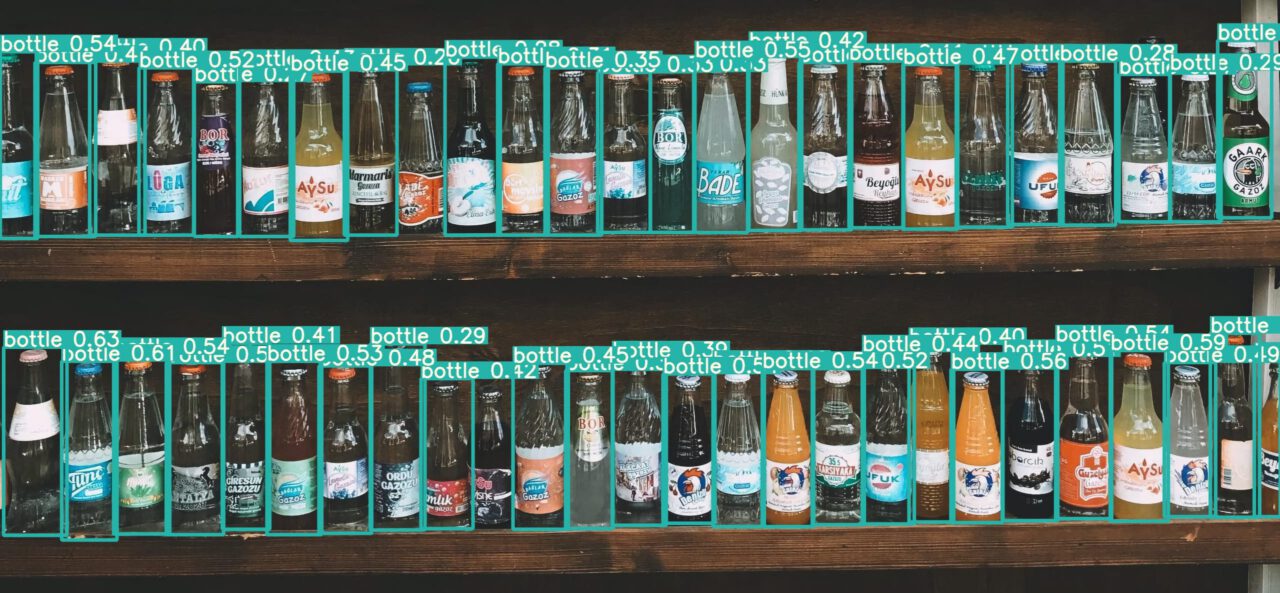In the rapidly evolving retail landscape, there is an increasing need for automated product detection capabilities. Visual product recognition is a popular computer vision application that analyzes camera video streams to localize, detect and classify different product items or product types.
The ability to automatically detect products provides a wealth of opportunities for retailers to increase operational efficiency and save overall costs.
The Need for Product Detection Technology
In stores, warehouses, and shops, thousands of products are moving in and out daily. Keeping track of these items manually is time-consuming and prone to errors; manual methods are inconsistent and slow.
Product recognition technology provides new technologies for retailers to innovate and address key pain points in the retail industry:
- Manual Product Identification: Traditional methods of product identification rely on manual scanning or human intervention, which can be time-consuming, prone to errors, and inefficient.
- Out-of-Stock Situations: When products are not readily available on store shelves, customers may become frustrated.
- Shrinkage and Theft: Retailers face losses due to theft, shoplifting, and employee fraud.
- Inefficient Inventory Management: Poor inventory management can result in excess stock, leading to increased holding costs, product obsolescence, and markdowns.
Product detection methods automate the process of identifying and classifying products using AI algorithms with deep learning. Such systems provide consistent 24/7 operation at higher accuracy.
Use Cases of Product Detection
Product detection technology has a wide range of applications in the retail industry. Here are a few examples:
- Inventory Management: With product detection, retailers can keep real-time track of their inventory, reducing the chances of stockouts or overstocking.
- Checkout Systems: Automated checkout systems can use product detection to identify items quickly and accurately, speeding up the checkout process and improving customer satisfaction.
- Loss Prevention: By monitoring the store in real-time, product recognition can help identify potential theft or misplaced items, enhancing store security. Such AI systems help increase the success of randomized self-checkout theft controls.
- Data Analytics: Retailers often lack detailed insights into product performance and customer behavior. Product recognition technology provides valuable data on these aspects, helping retailers make informed business decisions.
Business Value Proposition
When used at scale, product detection technology provides significant benefits:
- Efficiency: By automating the product identification process, businesses can save time and resources.
- Accuracy: Product Detection reduces human error, ensuring accurate inventory and pricing.
- Customer Satisfaction: Faster checkout times and accurate inventory lead to a better shopping experience, increasing customer satisfaction and loyalty.
Technical Viewpoints
Product Detection technology leverages advanced computer vision techniques. These include:
- Image Recognition: This is the process of identifying and detecting an object or feature in a digital video.
- Deep Learning: This involves training artificial neural networks on a large amount of data, enabling them to recognize patterns and classify images.
- Edge AI: Distributed systems to process real-time computer vision workloads at the edge to comply with data privacy regulations.
- Custom Training: The ML models are custom trained to detect a range of products automatically.
In conclusion, Product Detection is a game-changer for the retail industry. By automating the process of product identification and classification, it offers a host of benefits, from improved efficiency and accuracy to enhanced customer satisfaction.
Viso Suite provides a powerful platform to build, scale, and customize product recognition systems. The computer vision platform is built for teams to reuse existing security cameras and integrate with other systems seamlessly.
